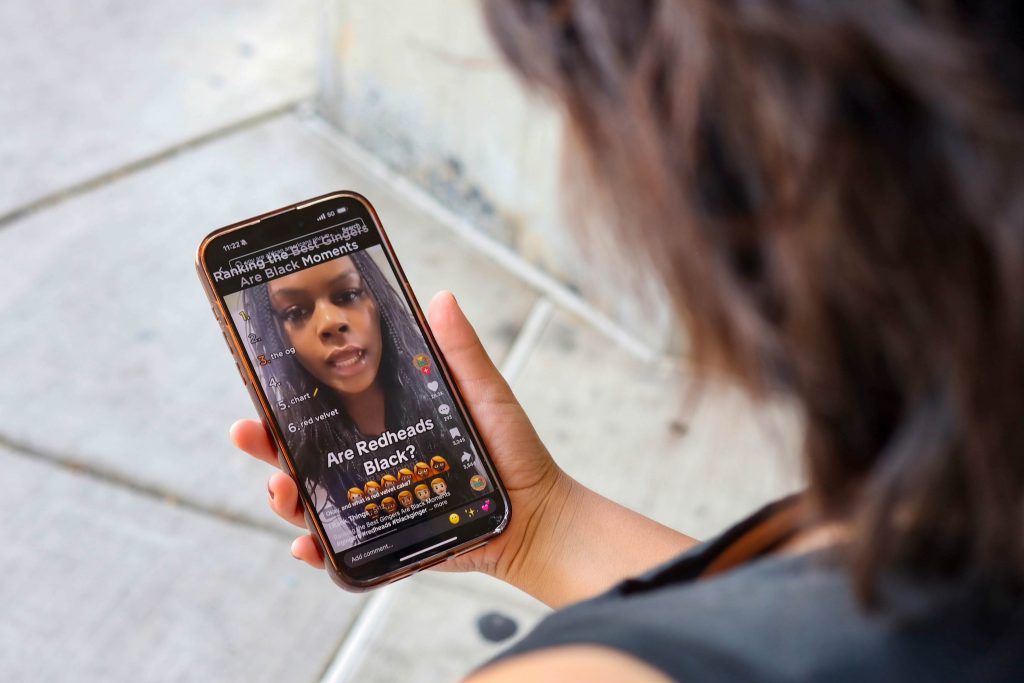
For the past month on TikTok, the phrase “gingers are Black” has been floating around. No, this is not some indecipherable Gen Z slang for something unrelated; this statement is to be taken at face value: white gingers (people with reddish/orange hair) are Black people.
The phenomenon started when a Black TikToker posted a seemingly harmless video in which she stated: “Everyone who is ginger, who has red hair, those are Black people. All gingers are Black people. You see a white man with red hair, that’s a Black man. You see a white woman with red hair, that’s a Black woman.” The video has garnered over 70 million views and the idea has taken TikTok by storm, sparking a series of interesting conversations.
Obviously, white gingers do not physically resemble Black individuals. However, this new understanding of Black-ginger solidarity has been linked to the historic treatment of both Black and ginger individuals in primarily white spaces.
While today, European-descended gingers are considered “white,” this was not always the case. Red hair was often considered a marker of Irish heritage.
When Irish immigration to the United States spiked in 1845 (due to Ireland’s potato famine), those who came were often forced into cramped and miserable living quarters, often crowding multiple families into homes meant for just one. Because of this, disease and mental illness ran rampant in these communities, often leaving them to face hostility as they bore the blame of spreading disease and being unsanitary. Irish-Americans often worked dangerous jobs for pitifully low wages or as indentured servants. They often faced racial discrimination from other “white” Americans and were targeted by groups such as the Ku Klux Klan. On TikTok, parallels are being made between the discrimination that Irish immigrants faced in the 1840s and the post-abolition racism faced by Black Americans in the 1860s.
When Irish immigrants and Black Americans found themselves in similar living conditions, there was a sense of solidarity formed between the Irish men and the Black men, but only in some cases. The 1863 New York City draft riots displayed that despite the Black-Irish solidarity that was common in cities like New Orleans, this was not the case nationally. Irish rioters, distressed with the 1863 Conscription Act (which forced them to be drafted into the military), took their anger out on wealthy whites, abolitionists and Black people alike, burning, beating and looting any Black people in their rage.
So, what is with the online “gingers are Black” craze? Is it a harmless joke? Or does it minimize the painful experiences of Black Americans?
While discrimination towards the Irish was unjust, as more immigrants flooded to the US, public enemies shifted from Irish to Italians, then to Eastern Europeans and then to Mexicans, with the cycle continuing to this day. In other words, the Irish “earned” their whiteness and with time they were no longer seen as a “threat” and became part of “white” America, as did Italian and Eastern European people. This was not the case, however, for people of color, and Black people in particular.
In 2025, Black people continue to fight against institutionalized racism and discrimination: the results of Jim Crow laws and redlining. Additionally, within the Black community, the scars of slavery have not yet healed; generational trauma continues to be passed from predecessor to descendant in a seemingly never-ending cycle of unconfronted trauma, which often leads to the abuse of the self or others. If slavery and the era of Jim Crow laws were so long ago, if the poisonous ideologies of race and racism were not passed down through generations by white individuals, perhaps the US would be healed.
At the end of the day, race is an imagined construct, created with the intent to divide rather than unite. As Ta-Nehisi Coates once said, “race is the child of racism, not the father.” While “gingers are Black” content was intended as a joke, it is important to recognize that because gingers are white, they benefit from white privilege.
Gingers do not have to make sure their palms are turned upwards if they are pulled over by cops, they do not have to worry about not getting a job—despite their qualifications—because their name sounds “Black,” nor do they have to battle the corrosive effects of racism daily. This is white privilege: the privilege of not having to be constantly aware of your race, for survival’s sake.
There is nothing fundamentally wrong with Black-ginger solidarity, as today they are both still mistreated for their appearance in certain spaces. However, a line must be drawn. The issue arises when white gingers genuinely see themselves as Black. While the original TikTok was satire, it is incredibly dangerous in that it opens up an avenue for white people to minimize Black struggles by inserting themselves into the conversation. Furthermore, it is particularly dangerous in this era of far-right culture wars, falsified white “genocides” (such as that in South Africa) and during this time where there is a prevalent call for “No more white guilt.”
This trend is not inherently awful, but it is a slippery slope in the current socio-political climate. The TikToker who started this trend should not be cancelled. Rather, white gingers should be aware of their whiteness and recall that while they may relate to Black people in some ways, they are not Black, they will never be Black and to portray themselves as Black (or any other race that is not their own) as a white person is intrinsically offensive, disgustingly unaware and quite frankly, racist.
On one hand, there are white gingers thanking the Black community for their solidarity, which is completely harmless. On the other hand, however, there is the more insidious conversation which argues that gingers are the Black people of white people—this is sad, rude and outright offensive.
So…Are Gingers the New Black? Not really. Online solidarity is mostly harmless but outright identifying as Black as a white person is wrong and undermines the challenges faced by Black Americans of the past and today.


